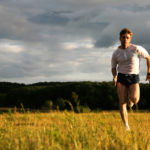Jason Karp, PhD
Jason Karp, PhD
Article Archive
To get faster and chase their dreams, Kenyan runners have specific training habits which can benefit your fitness business and career.
Read MoreTo paraphrase an ancient Chinese philosopher, “A journey of 26.2 miles begins with a single step.” From the time the Greek runner Pheidippides ran from Marathon to Athens in 490 BC to announce the Greeks’ victory in the Battle of Marathon, humans have had a compelling interest in taking that single step–and many more after it.
Read MorePlateaus are boring. They are flat, unchanging, predictable. Many people who have been exercising for a while reach a plateau, during which their fitness level doesn’t change and they experience a period of stability: they can’t lose more weight, they can’t seem to create a leaner look and they can’t increase the number of reps…
Read MoreOne of the main reasons for all of the attention being given to interval training in the fitness industry is that it can improve fitness quickly, which is great news for busy people who don’t want to spend 2 hours in the gym.
Designing Interval Workouts
Read MoreThere has been a lot of commotion lately about interval training. Once the training secret of the world’s best runners, interval training has gained some buzz in the fitness industry.
Read MoreAltitude is mysterious. Part of the mystery comes from the fact that altitude escapes all of our senses—we can’t see it, taste it, smell it, hear it or touch it. But we can feel it. Most of the time, we don’t even think about altitude, except when we take a ski trip or hike up…
Read MoreExercising in the heat can endanger health and impede exercise performance. Hot and humid days pose a particular risk: when it’s humid, the ability to dissipate heat is minimized, which can ultimately lead to heat exhaustion and heat stroke. The two most important things your clients can do to prepare themselves for their summer outdoor training sessions are hydrate and acclimatize.
Read MoreEver notice that some of your clients can do cardiovascular exercise for long periods of time but tire quickly when lifting weights? Or that others can lift heavy weights but run only 5 minutes on the treadmill? The reason why some clients can run faster or longer or get bigger muscles more easily than others lies in their muscles. The specific types of fibers that make up individual muscles greatly influence the way your clients adapt to their training programs. Humans have different types of muscle fibers (as well as gradations between them).
Read MoreAnyone who grew up as a runner in New Jersey, as I did, would tell you that running during the summer in the Northeastern United States is no ordinary challenge. Some days are downright sticky; stepping outside your air-conditioned house can feel like walking into a steam room. Similarly, many places in the country experience harsh summer conditions that carry thermal and cardiovascular challenges. Knowing how to handle these will protect your clients.
Read MoreWhy should we understand muscle physiology? It’s knowledge that can help us better serve our clients, of course, and help define our relationship with our own anatomy!
Read MoreAll the time, I hear fitness professionals tell their clients not to exercise above a certain heart rate, as if it were bad for people to run or bike fast. Target heart rate has become a buzz phrase. Even many cardio machines display a “fat-burning zone” on their panels, encouraging people to exercise in a specific heart rate range. Have you ever wondered if your clients really have to exercise in a specific heart rate zone to lose fat? And what happens if they venture out of that zone?
Read MoreOne day, while I was running on a treadmill at the gym, a personal trainer approached the person next to me to share some advice. “Muriel,” she said, “if you want to burn fat, you should keep your heart rate within a specific zone.” I was so shocked at what I’d heard that I nearly fell off the treadmill!
Read MoreThere are more than 300 marathons just in the United States each year, with hundreds of thousands of people running them. Chances are that one or two of your clients want to do one. So how do you train them for a marathon? Consider the following strategy.
Mileage
Read MoreIn 490 BC the ancient Greek hero Pheidippides ran from Marathon to Athens to announce the Greeks’ victory over Persia in the Battle of Marathon. When the modern Olympic Games began in Athens in 1896, a running race named after the Greek town of Marathon was introduced to commemorate Pheidippides’ legendary run. Now there are more than 300 marathons just in the United States each year, with hundreds of thousands of people running them. Chances are that one or two of your clients want to do one. So how do you train them for a marathon?
Read MoreWhen you were young, you probably heard the jingle “The knee bone’s connected to the thigh bone; the thigh bone’s connected to the hip bone; the hip bone’s connected to the back bone . . .” That ditty could go on for some time, since there are 206 bones in the human body—from the large, thick femur that spans the length of your thigh to the tiny, thin stapes, a stirrup-shaped bone that transmits sound inside your ear. Your skull alone has 22 bones (no wonder my mother keeps telling me I have a hard head!).
Read MoreDo slight changes in body position affect muscle activation during strength exercises? The only way to truly know which muscles are used during an exercise is to measure their electrical activity with an electromyogram (EMG), the skeletal muscle equivalent of an electrocardiogram for your heart. Well, guess what? Scientists have done just that. Let’s take a look at how different body positions affect muscle activity during some common weight training exercises.
Leg Extensions
Read MoreThe energy we use to move comes from three metabolic energy pathways: the phosphagen system, glycolysis and the aerobic system.
Read MoreOne day, while I was doing squats in the gym and listening to my iPod, a bodybuilder friend approached me with some advice. “Jason,” she interrupted, “if you want to target the inside of your quads, use a wide stance and point your toes out like a duck. If you want to target the outside…
Read MoreFrom the time the ancient Greek runner Pheidippides ran from Marathon to Athens to announce the Greeks’ victory over Persia in the Battle of Marathon, humans have had a compelling interest in endurance activities. Indeed, humans have repeatedly tried to push the limits of endurance. From the 50 marathons in 50 days and the 300…
Read More













